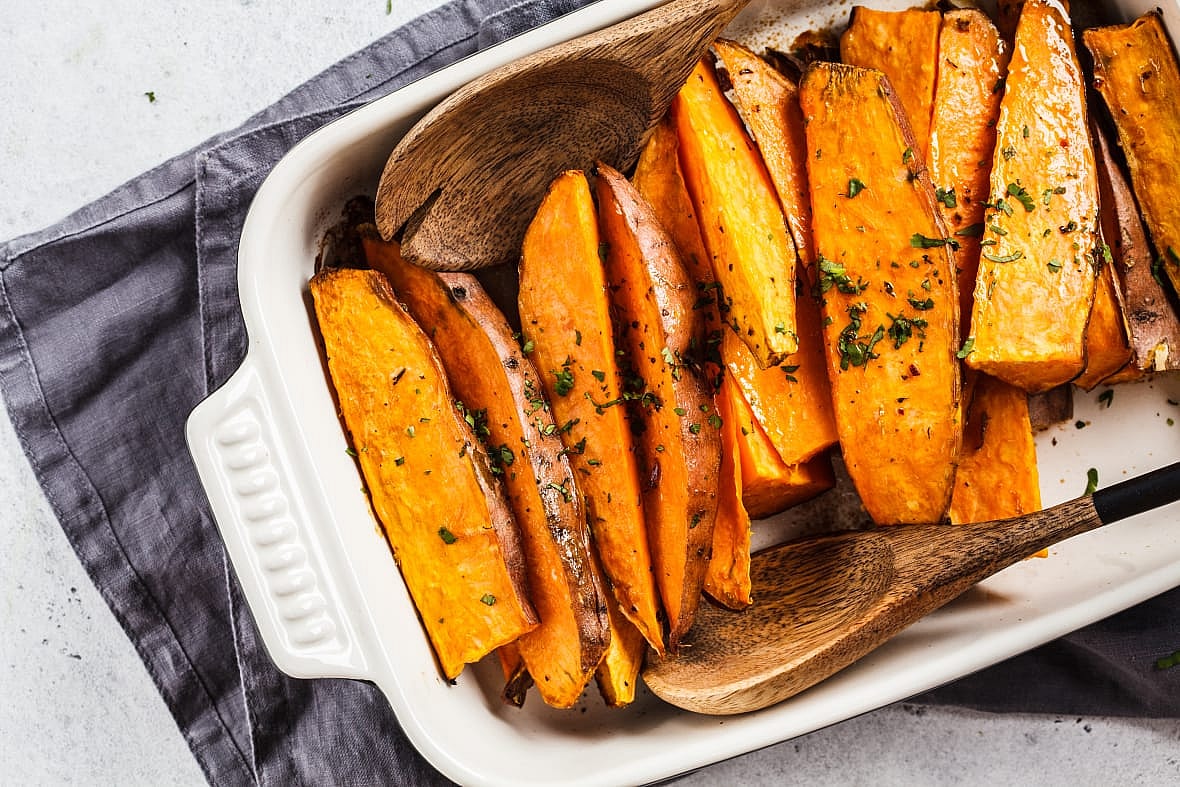Turns out soul food can be good for you — if cooked mindfully.
Studies indicating too much soul food can lead to heart disease and other ailments often ignore the recipe changes people can make to their favorite foods to keep them tasty and healthy, nutritionists say.
“People of color were not taught about how healthy their foods are from a traditional standpoint,” Jasmine Westbrook, co-founder of the EatWell Exchange, told theGrio.

Healthy eating takes center stage this week during National Women’s Health Week, which encourages women to take care of their mental health, get checkups and, as Westbrook notes, eat a balanced and healthy diet.
Studies, like one by the Journal of the American Medical Association, point out that a diet steeped in fried foods and fats could be why Black people disproportionately suffer from hypertension. A diet high in fat and sodium can lead to high blood pressure, with risk factors including heart attack, stroke and kidney disease.
Despite the bad news, that doesn’t mean people must stop eating the foods they enjoy. The secret lies in understanding different food preparations, practicing moderation and changing the messaging.
Telling people the food they love could kill them is like saying Beyoncé can’t sing — people will shut you out and do what they want. Instead, Ashley Carter, Westbrook’s friend and EatWell Exchange co-founder, meets people where they are to preach incremental change.
“If I ask you to run a marathon tomorrow and you haven’t run a mile before, that’s a large change,” Carter said. “You won’t be able to do it. We keep that same mindset with the people we serve. Find small ways to make people more comfortable, and they’re more willing to change.”
Westbrook also has a simple message:
“Just because it’s associated with the name ‘soul food’ doesn’t mean it’s unhealthy.”
The EatWell Exchange teaches people how to eat healthily based on their culture. Westbrook and Carter discussed the health benefits of three Southern diet staples — okra, sweet potatoes and greens.
Okra

Okra is rich in magnesium, folate and several vitamins, including A, C and B6. Magnesium enhances learning and memory recall, helps regulate blood sugar levels and helps with mood and depression. Vitamin A helps bolster the immune system, C supports the immune system function, and B6 keeps the nervous system healthy.
And yes, eating okra means embracing the slime — the mouthfeel after cooking the vegetable — because of its potent health benefits.
“That slime is actually soluble fiber,” Carter said. “That fiber helps lower cholesterol and helps with gut health, that good healthy bacteria.”
Instead of deep frying, Carter suggests oven-baking okra with a drizzle of olive oil flavored with salt and pepper. Placing the okra under the broiler will give it that crispy texture.
Sweet potatoes

Sweet potatoes contain beta carotene, rich in Vitamin C and essential to the body’s healing processes. The body also converts beta carotene to Vitamin A. Yellow, orange and green leafy vegetables typically have high beta carotene levels. That’s why health professionals advocate for a plate containing different color vegetables; it naturally provides the necessary nutrients.
Westbrook said sweet potatoes are “very high fiber and healthy carbohydrates. Some people try to steer away from carbohydrates altogether, but your body needs carbohydrates, and sweet potatoes are the best way to get those.” The body converts carbs into energy that fuels people during activities and workouts.
Westbrook said people should also pay attention to the health benefits of sweet potato skin, which contains insoluble fiber that helps with digestion, moving waste through the body and preventing constipation.
Greens

Carter said all green leafy vegetables are a great source of iron and vitamin K, which is excellent for blood clotting and function. Like okra and sweet potatoes, greens are high in antioxidants, which studies show help prevent cell damage linked to cancer.
The foods provide nutritional and emotional value.
“Collard greens, being cooked on a holiday, is just one of those staples,” Carter said. “Not only are we talking about the nutritional value of these foods, but it’s also what that food provides to us, mentally and emotionally. It’s that connection to a grandparent that passed away, having that family time, or reminding us of the holidays. It does have that emotional component as well.”
How to make healthy greens
Kimberly Snodgrass, the national spokesperson for the Academy of Nutrition and Dietetics, has held several leadership roles in the nutrition and dietetics field. Here’s how she cooks her greens:
“Instead of using pork like a ham hock or something like that, I would use a smoked turkey leg or smoked turkey wing. I like the leg better now. The thing with pork versus turkey, typically, it’s still the same salt content. But turkey will be less cholesterol and less fat. I try to use more herbs and spices and less salt because that smoked turkey leg has enough salt. I’ll use garlic powder, onion powder, a little crushed red pepper, minced garlic and fresh onions,” she advised.
“I use a lot of herbs and spices because I try to get away from that salt,” Snodgrass added. “If you use some chicken broth to cook them in, I get like low-sodium chicken broth to try to keep our blood pressure down.”

